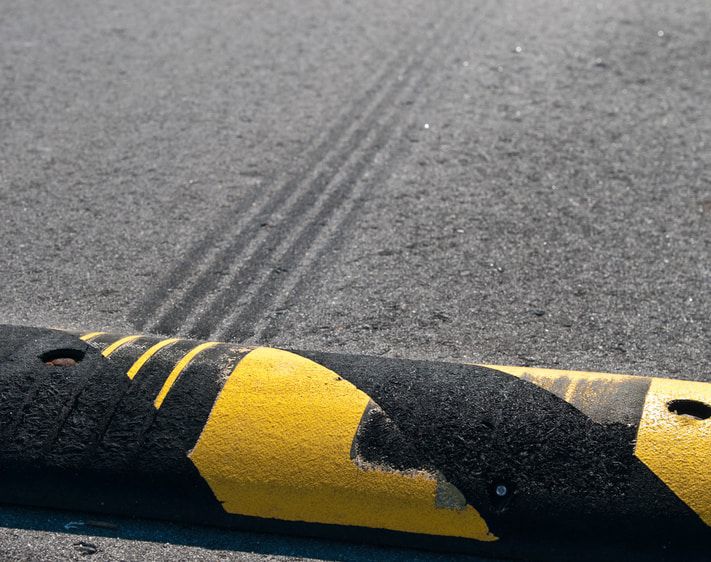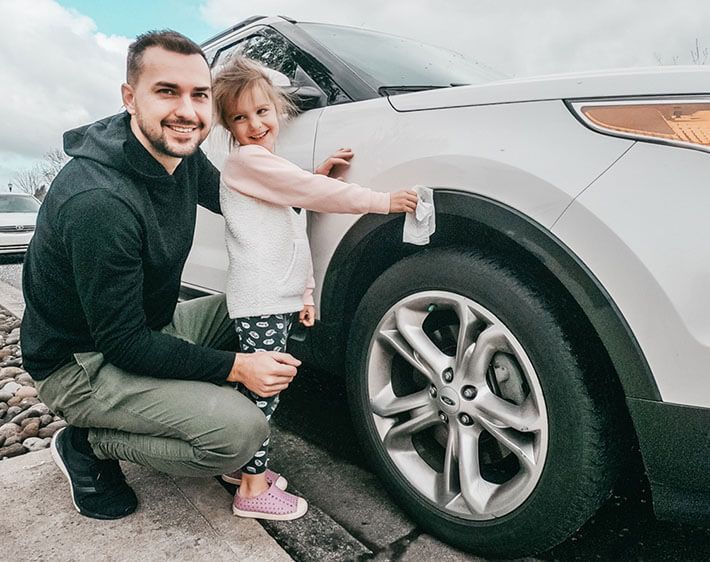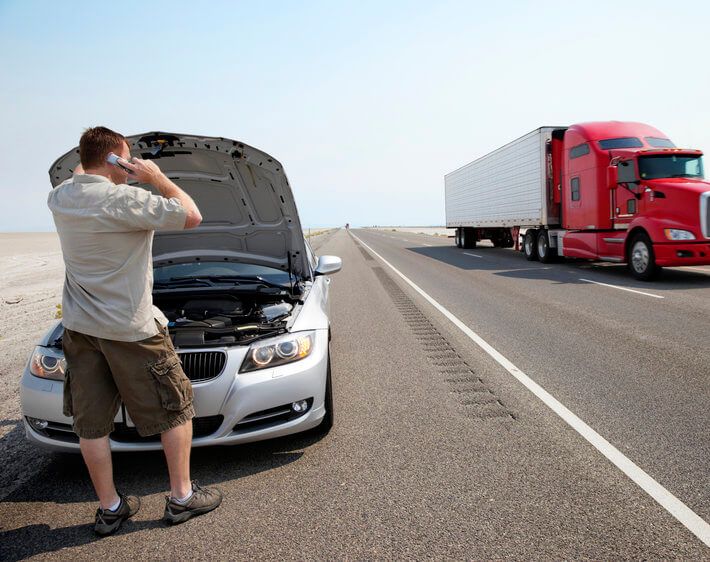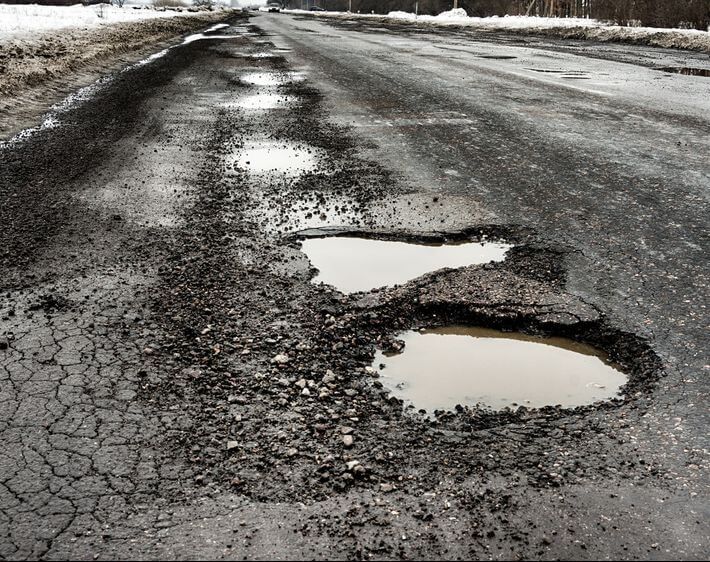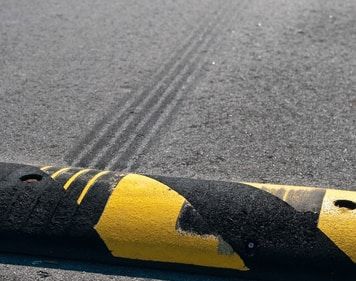
1. Slamming Into Potholes
Some cities may have worse pothole problems than others, but the reality is that potholes are everywhere. And these road gashes can make for more than a bumpy ride. When hit head on, potholes can also damage your car’s suspension, steering, and alignment.
Stay alert and drive defensively to help avoid potholes. If you can’t avoid hitting a pothole without crossing into another lane of traffic at the last minute, slow down instead. You'll minimize the impact and the potential damage.
2. Speeding Over Speed Bumps
Similar to hitting potholes at high speed, going over a speed bump too quickly is another driving habit that can compromise your car’s alignment. Speed bumps are designed to keep both pedestrians and drivers safe. By slowing down when you approach a speed bump, you can help keep your neighbors and your car happy.
Tread with extra care if your vehicle rides low to the ground. Hitting a speed bump can put a dent in your bumpers or damage components in the undercarriage. If you think you might already have damage from speed bumps, head to your nearest Firestone Complete Auto Care for a quick Courtesy Check to identify issues before they worsen.
3. Ignoring Your Parking Brake
Did you know? You're supposed to use your parking brake every time you park—no matter what kind of terrain you're on!
“Whether your car is a manual or automatic, the terrain is hilly or flat, you should use your parking brake every time you park,” writes Driver’s Ed Guru.
While your transmission can stop your vehicle from rolling when it's in "Park," the parking brake is the only part truly designed to keep your car wheels locked in place. Failing to engage your parking brake can cause stress and premature wear on other parts of the car.
Engage the parking brake before shifting the car into “Park” to limit the stress that’s put on your transmission, help prevent parking failure, and even prevent transmission repairs down the road.
4. Not Stopping When You Shift from "Reverse" to "Drive"
We get it. Sometimes you’re in a hurry to get going, and you switch from “Reverse” to “Drive” while your car is still moving. But consider this—every time your impatience gets the best of you, your car's transmission system takes a hit.
The transmission isn't built to stop your car and switch gears at the same time. It relies on the brakes to stop the car's motion so it can make a smooth transition between gears. Shifting while your car is in motion, even a little bit, can damage an essential mechanism in the transmission.
Instead, come to a complete stop before shifting from "Reverse" to "Drive," or vice versa. If you think your car may have damage stemming from this bad driving habit, don't wait until your transmission is beyond repair! Schedule a transmission service appointment at your earliest convenience.
5. Ignoring Dashboard Lights
Is your dashboard display lit up like a Christmas tree? While a smattering of dashboard lights might have you daydreaming of sugar plum fairies and holiday feasts, your car isn't. It's asking for help in one of the best ways it knows how—with warning lights!
Leaving dashboard lights uninvestigated could leave you stranded or stuck with major repairs down the road. Pay special attention to the battery, brake, airbag, coolant, oil, and check engine light. When one of these lights pops on, it's a sign that something needs to be investigated for your safety and your passengers' safety. Stop by Firestone Complete Auto Care for a free vehicle diagnostic code scan.
6. Letting Your Gas Tank Sit Near Empty
Fuel gauges are notoriously inaccurate. You may think you have another 40 or 50 miles left in the tank after the low fuel light comes on, but you might not. It depends on the driving conditions!
Gasoline can act as a coolant in your fuel system, and keeping too little gas in your tank can cause parts to overheat and malfunction. Your catalytic converter, fuel pump, and fuel system could all be damaged, especially if you run out of gas completely.
Help prevent this type of damage by keeping your gas tank at least a quarter full and investing in regular engine tune-up and fuel system cleanings.
7. Riding the Brakes
“Riding the brakes” means you leave your foot on the pedal for prolonged periods, and it can lead to brakes overheating. When brakes overheat, they lose some of their stopping power, making it harder for you to stop quickly and safely.
There are a few things you can do to help prevent overheated brakes. Rather than keeping your foot on the brake pedal as you drive down a hill or navigate through stop-and-go traffic, try:
- Switching to a lower engine gear (if you drive a manual).
- Driving cautiously, with extra space between cars.
- Letting up on the accelerator to slow down.
Don’t Let Bad Driving Habits Damage Your Car!
Did you spot one of your driving habits on this list? Don’t panic! The first step to correcting bad habits is recognizing them. Once you’ve changed your ways behind the wheel, help undo any existing damage (or prevent more damage) at your local Firestone Complete Auto Care. Don’t let your car become a victim of these bad driving habits—drop in or schedule an appointment online today.
